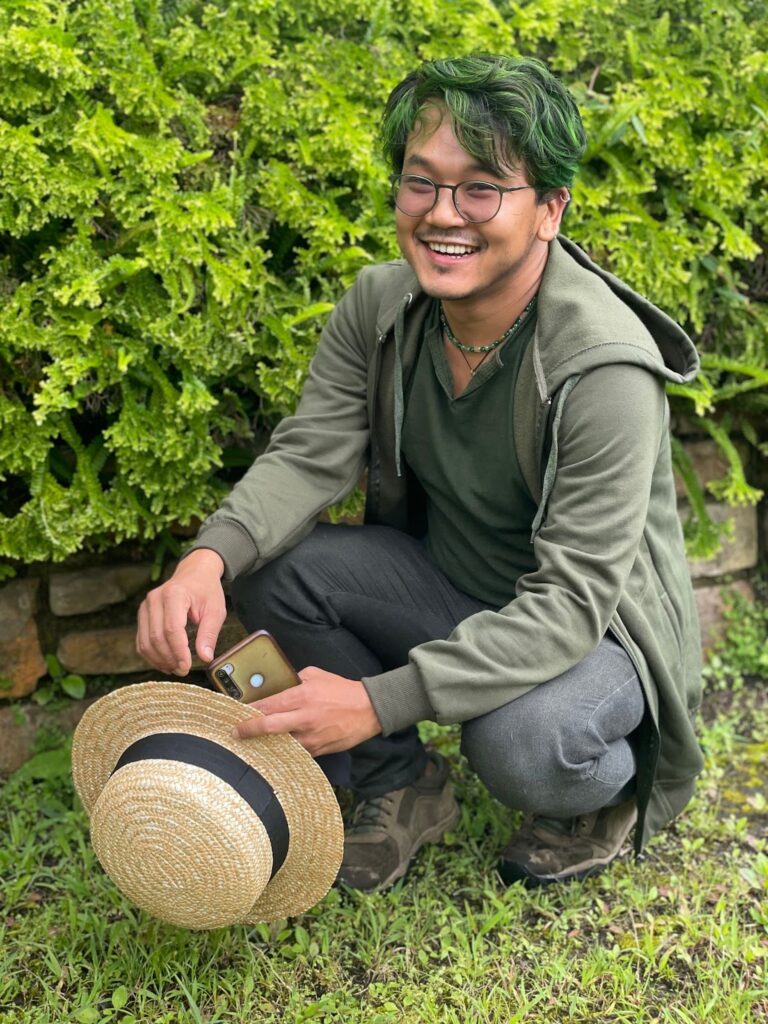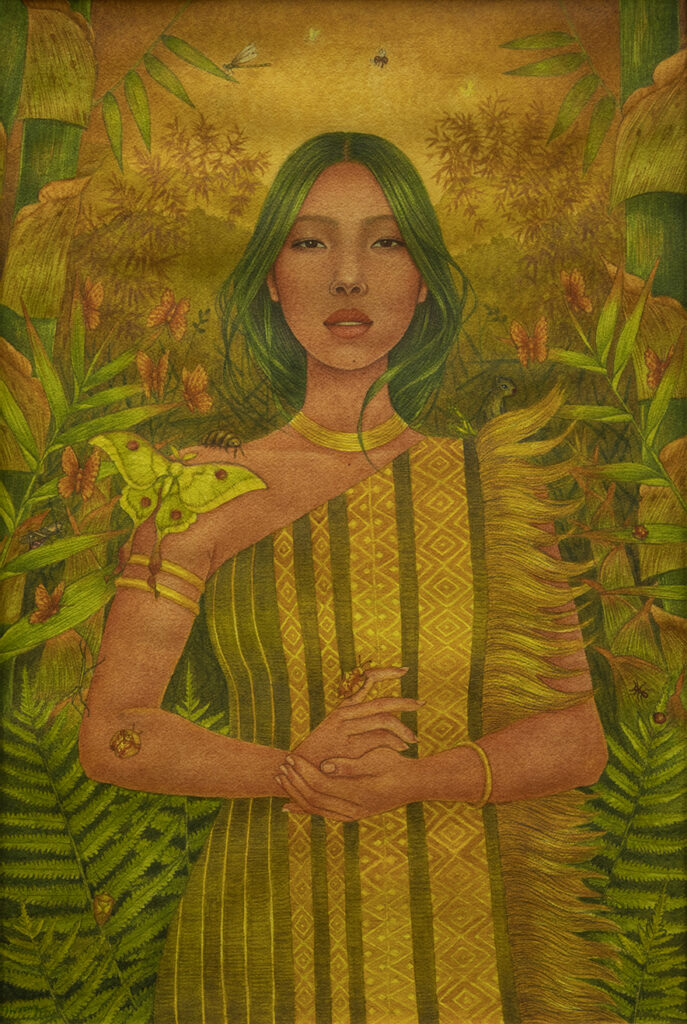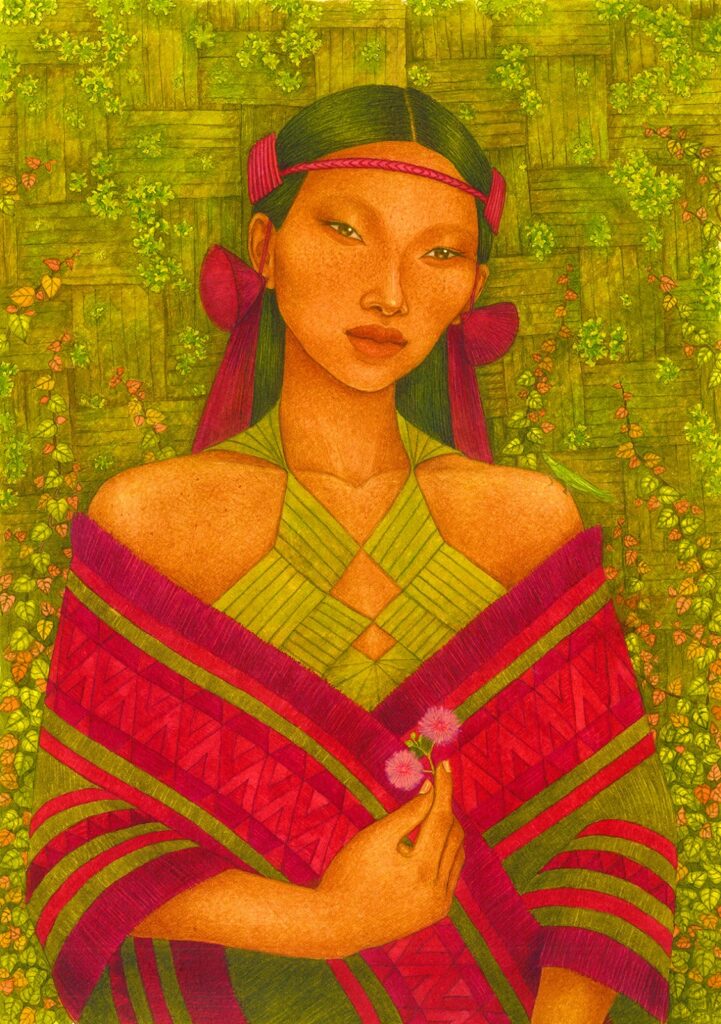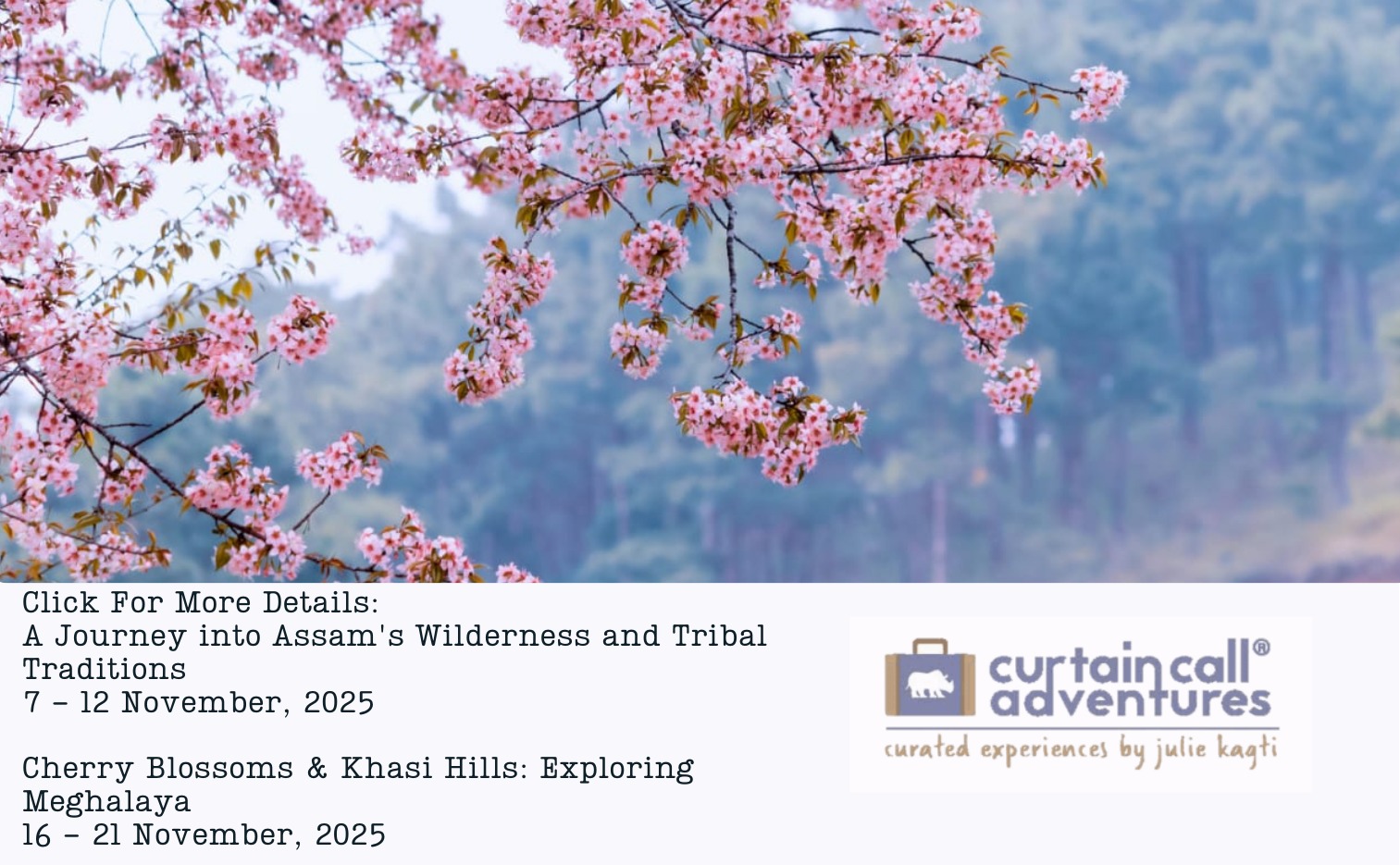Scrolling through artist Thokchom Sony’s Instagram handle, it’s hard not to notice videos and images of the striking Golden Tortoise beetle or Sandrembi as it’s known as in Manipur – these tiny other-worldly creatures with a golden body and translucent wings that look ethereal. Much like Sony’s surreal works of art – striking watercolours of goddess-like women often cloaked in traditional woven patterns from Manipur and surrounded by motifs of indigenous flora and fauna.

Based in Delhi but born and brought up in Manipur, Sony’s love for art manifested early. Encouraged by an older cousin, young Sony would draw story panels to narrate tales to his siblings and cousins. “I wouldn’t miss a single art class in school. I was only good in art and I was a slow learner and had difficulty memorising lessons. I came to Delhi after insisting my parents allow me to take up a career in fine arts which they initially didn’t agree to,” Sony says. In 2008, Sony joined Jamia Millia Islamia University’s Bachelor of Applied Arts programme and went on to create digital illustrations for publishers and companies. “In 2015 I started creating art for myself and ever since it has been continuously evolving as I grow older,” says the 35-year-old artist. In this interview with Curtain Call Adventures, Sony talks about celebrating his roots through his beautiful works of art.
Your latest art series, Growing Wild, is deeply connected to your roots in Manipur. Tell us about what inspired you.
My art style is a mix of fashion Illustration and fine arts. I see art as a language to express, communicate and heal. The Growing Wild series is about the journey of reconnecting to my roots and culture. In 2020, the pandemic became a turning point in my career. During the pandemic, I got a chance to go back to my hometown and revisit and observe Manipur’s nature and culture from a fresh perspective. In the past 20-25 years, Manipur, especially the landscape of Imphal and the surrounding hills, has changed a lot.
When we were young there used to be more trees, ponds and bamboo groves. Now it’s hard to even find Sandrembi (Golden Tortoise beetle) and fireflies which were plenty while we were small. I get inspiration for my paintings from nature but I also like to address environmental issues in a subtle way. While exploring I also get to learn so much about our ancestral ways of life in relation to the environment and sustainability.

You’ve been based in Delhi for a while now. How has this impacted your perspective & journey as an artist?
Delhi is a busy city and a hot pot of cultures from all over the world. I found myself and my identity because of this city. Good times and bad times, I have had a lot of challenges in the beginning but the experiences have truly shaped me and enriched my journey. I have met so many wonderful people who have loved me for who I am, who have inspired me and motivated me in my journey. I don’t know where I would be today if I were living in Manipur only.
You’ve also talked about how the pandemic and mental health (specifically your mother’s battle with schizophrenia) has influenced you as an artist. What has been your family’s response to your choice of career?
Like in every family during the pandemic, it was tough in the beginning with fear and anxiety due to isolation. I was grateful to be able to get back home on time before the airport was shut. Art really helped me during those days. I believe the art that we create during our lowest time can become quite profound as our whole concentration is channelised through art. Initially, my parents were not sure about my choice of career but now as they see me growing in this field, they are very proud.
The women in your Growing Wild series almost look like nature goddesses. They also seem to be draped in ethnic weaves which presumably comes from Manipur’s rich textile tradition?
I have created almost all the faces of the women in my art from imagination. I study some of the textiles in Manipur but also [paint] from observation and intuition. I have seen some connection between the geometric designs used by most tribes around the world in their textiles with the geometry in nature. I get a lot of inspiration in terms of the design and colour harmony from nature.

Then there is flora & fauna that are endemic to Manipur as well. Can you tell us about that?
I am very much fascinated with the medicinal plants of Manipur. We don’t know much about these edible or medicinal plants that grow wild there. These things I have never studied in school. Yes, there are books but it’s more fun to learn from the experienced elders back home. I try to incorporate some of these finds in the backdrop of the figures in my paintings.
Which are some of your favourite artworks (from your own body of work) and what is it about them that you love?
Although I get excited with every new piece I create, my favourite one at the moment would be “Psychosis” that I had created during an online artist residency [hosted by the Art for Change Foundation in partnership with The Lighthouse Experiment] on mental health. The painting is very personal to me and I talk a little bit about schizophrenia which I learned during the pandemic.
Are there any artists whose works have influenced you greatly?
I’m inspired by Van Gogh and Amrita Sher Gil but also, I’m very much influenced by art nouveau styles and Japanese Ukiyo-e.
Tell us about your preferred medium of art.
I love watercolour on paper at the moment. The transparent medium and the luminescent quality allow me to preserve my lines and also help with layering the details of my work. I would love to explore other similar transparent mediums and natural dyes in the coming days.

What advice would you give to aspiring artists from the region?
Being a freelance artist is not easy and can be quite challenging in the beginning but it is a rewarding experience to be able to follow your dream, get recognition and make a living doing the things one is passionate about. My advice to aspiring artists would be to observe a lot, look at things from different perspectives, and sketch a lot to help improve your hand and mind coordination. Experiment with different art styles and mediums while enjoying the process. Someday you will find your own unique style. Put yourself out there; let the world see your talent, connect with other artists and the art communities. In this digital age, there are tons of opportunities. I have been selling the majority of my artworks online mostly by networking. You may not need a degree to make art but do read to understand the basics of art and design.


One Response
Lovely read. Thanks Shivani, it’s wonderful to see Sony’s work and like the Q &A format